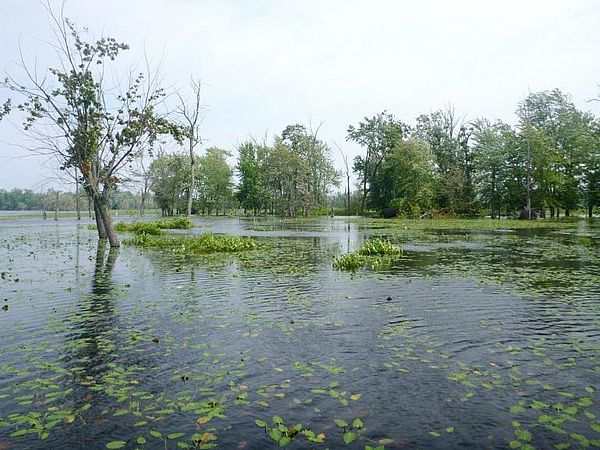The Sandbar wetlands in Milton and Colchester, along with two other unique Vermont wetlands (Dennis Pond in Brunswick and Chickering Fen in Calais) are now classified as 'Class I' wetlands. The designation places extra protections on wetlands with exceptional ecological features. Though most wetlands exhibit substantial levels of plant and wildlife diversity, Class I wetlands are granted additional safeguards from encroaching development because of their irreplaceable values. The three are the first to be granted Class I status in over a decade. Only three other Vermont wetlands have been assigned Class I status: Dorset Marsh in Dorset, Northshore Wetland in Burlington, and Tinmouth Channel Wetland in Tinmouth.
"These wetlands were conserved years ago in recognition of the value they provide in protecting fish and wildlife habitat, buffering our communities against the devastating impacts of floods, and improving water quality for drinking or swimming," said Emily Boedecker, Commissioner of the Vermont Department of Environmental Conservation (VT DEC). "The Class I designation memorializes their value by ensuring that the simple pleasure of spending quiet time observing nature in these treasured places is protected for all Vermonters, today and into the future."
Class I designations occur as part of a public process to make updates and changes to the Vermont Wetland Rules, which govern protections on wetlands. Amendments can be initiated by the Agency or through a petition to the Agency. The three wetlands nominated for Class I designations were included in the updated set of rules approved in January 2017 and became effective April 1.
Citizens can explore the wetland areas at appropriate times of year and through established trails or observation areas. Many wetland-dependent wildlife such as wood ducks, herons, osprey, bitterns, and marsh wrens are nesting, laying eggs, and rearing young in spring and early summer so care is required to avoid disturbing them. You'll find further details below to help you respectfully access and observe wildlife at the newly designated Class I wetlands.
The Sandbar wetland complex is mostly designated as a wildlife refuge by the Vermont Fish and Wildlife Department and public access is prohibited in the refuge area. However, good viewing opportunities are available in Milton and from Sand Bar State Park (click here for a map and background information). You can also paddle along the perimeter of the refuge and down the Lamoille River to observe wildlife from the water. Boats can be rented from Sand Bar State Park. The 1,100-acre wetland complex includes stands of wild rice and one of the largest and best condition examples of the uncommon Lakeside Floodplain Forest natural community type in the state.
The Chickering Fen wetland, wholly owned by The Nature Conservancy, is accessed via an easy one-mile hiking trail ending in a boardwalk into the wetland. Good times to visit the fen include May and June when unusual fen wildflowers can be found, and late October when the tamarack surrounding the fen turns bright yellow. The hike itself also features views of other wetlands, conifer forest, and a rich forest with spring wildflowers. Remain on the boardwalk when viewing the wetland to avoid harming the sensitive fen vegetation. The trail crosses private property, so do not enter areas marked as No Trespassing.
The Dennis Pond wetland can be explored either from the land or via canoe or kayak. This wetland supports ecosystems usually found in colder areas to the north of Vermont, with spruce-fir forest, large expanses of bog, and frequent moose sightings. Access is available via Route 102 and Dennis Pond Road in Brunswick. The bog is best viewed by boat to prevent trampling of sensitive plants. The site can also be accessed in the winter from a Vermont Association of Snow Travelers (VAST) trail on the west end of the wetland basin. Be aware that some of the Dennis Pond basin includes areas of private land and respect No Trespassing signs.
